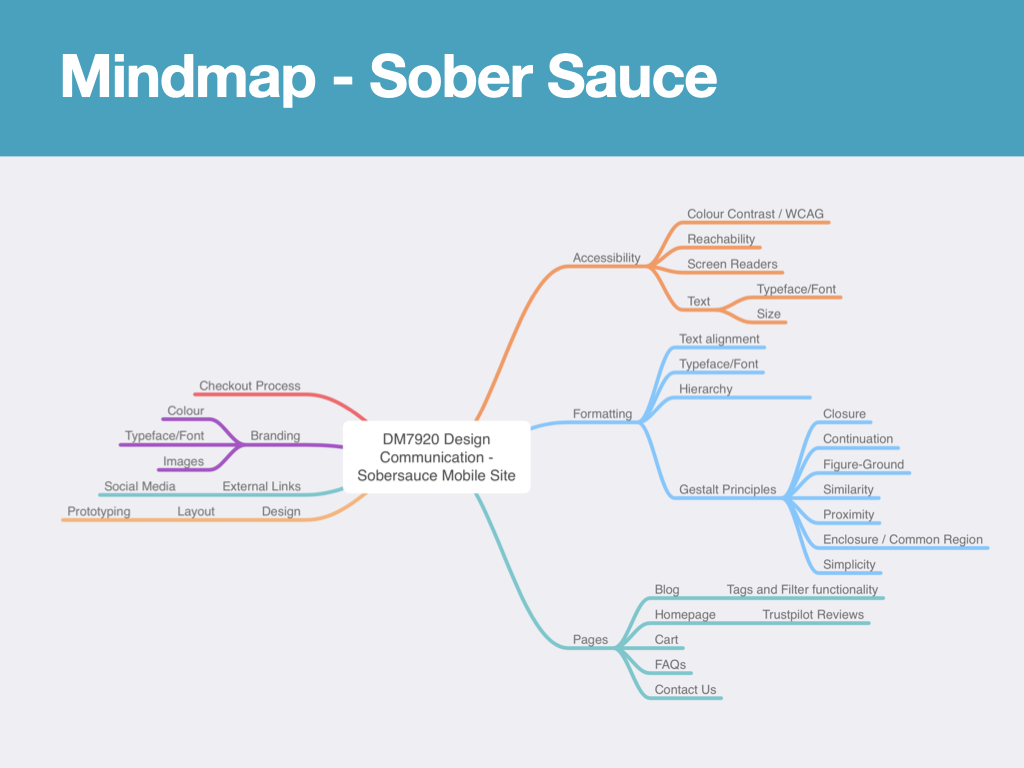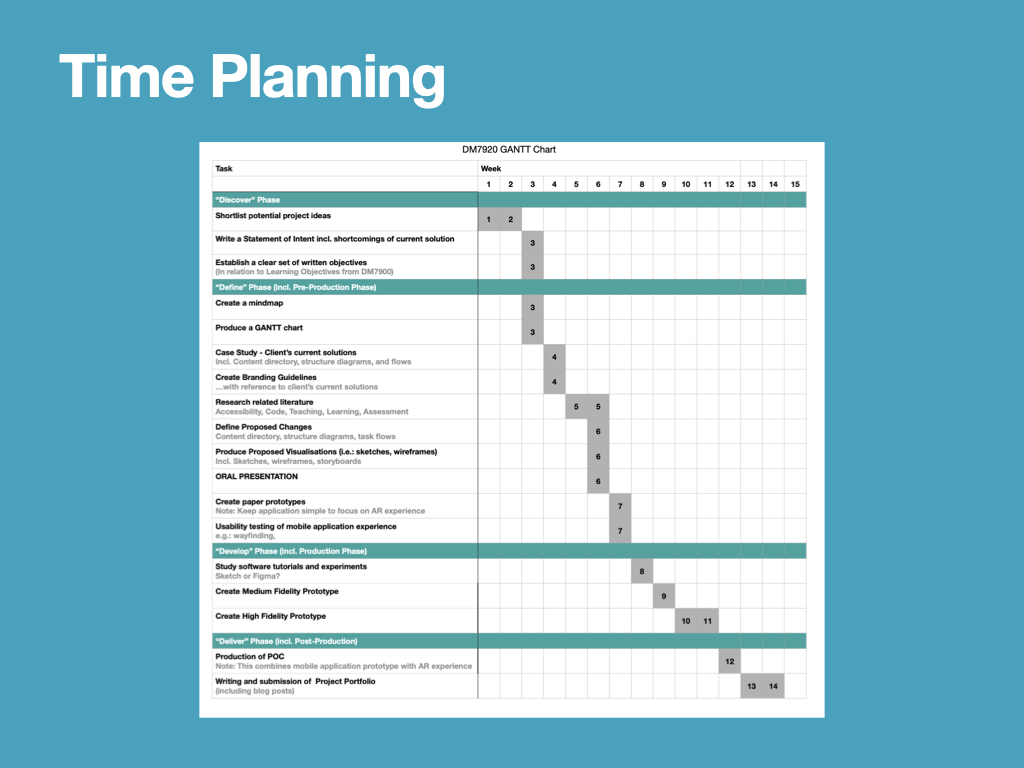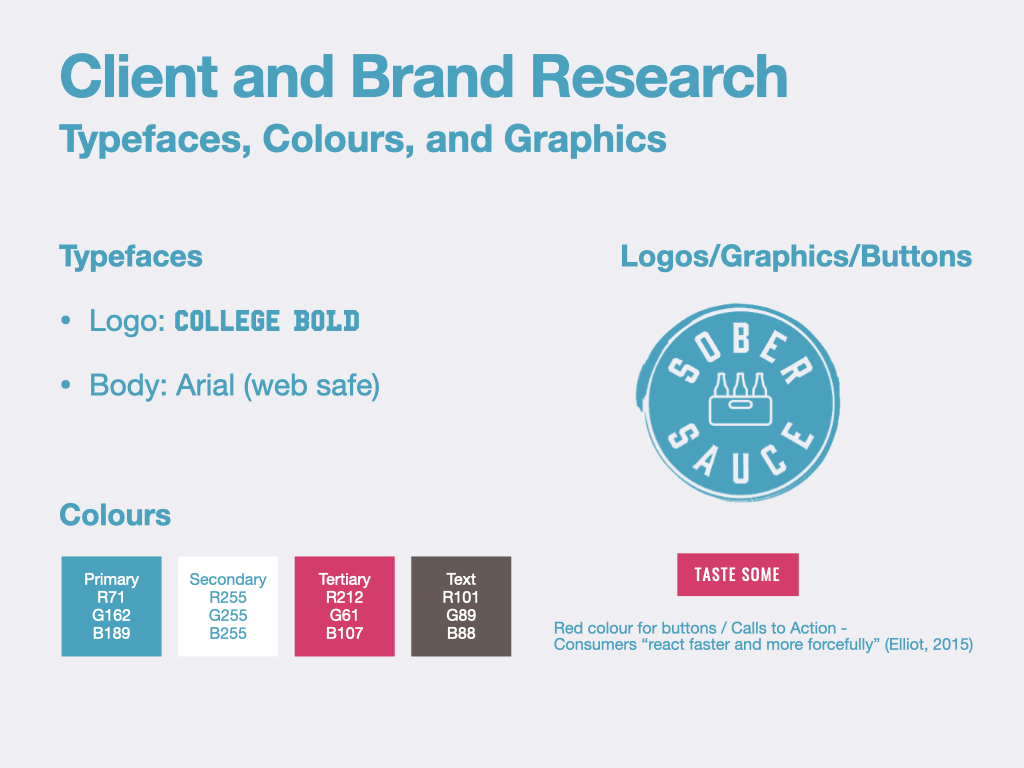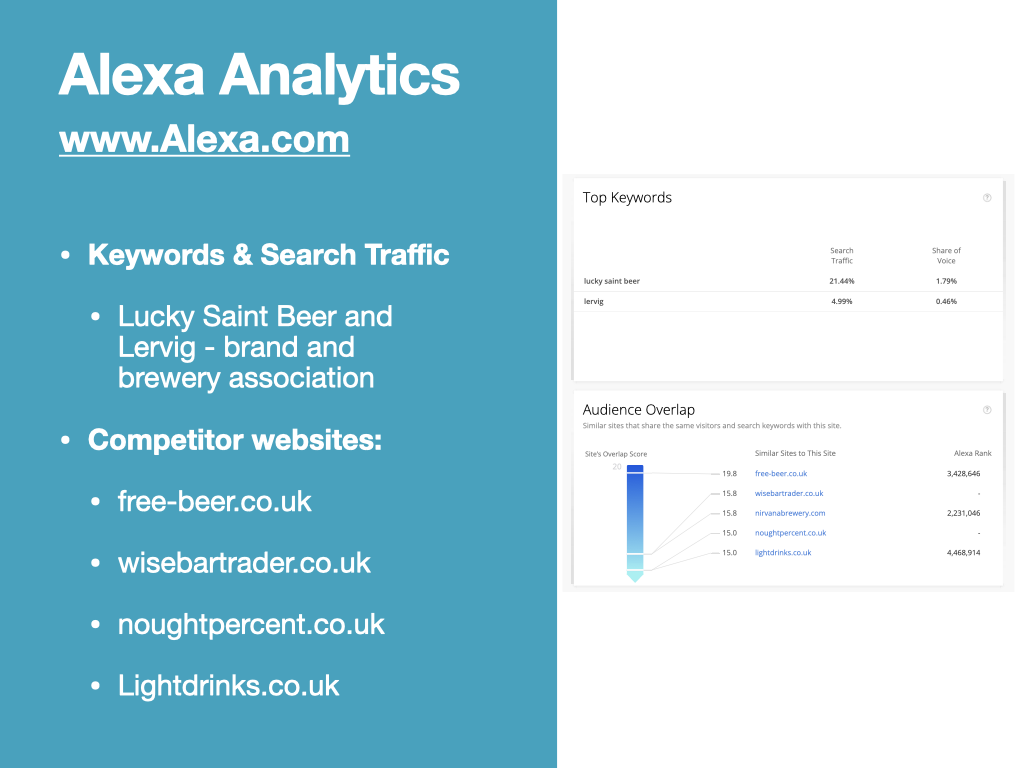In the past week I have identified a client for my project, carried out some initial client and brand research, and identified some methods for project planning and time management.
Introducing the Client
For this module I have decided that I will be creating a proof of concept that outlines some suggested changes to the mobile website design for an e-commerce company called Sobersauce. The project itself will be a simulated one, as I have little contact with the client themselves. Despite this, I feel that this client is ideal for the project as they are currently rebuilding their website – offering an opportunity for me to compare and contrast my design decisions with that of a design professional’s in three months time (when this module draws to a close).
Who Are The Client?

Sobersauce are an e-commerce company who specialise in selling low-alcohol / alcohol-free drinks. It appears that they purchase their products from around the world and then distribute them in the UK. Their website permits customers to join tasting programmes, purchase mixed cases of drinks, build their own cases of low-alcohol beer, and organise subscriptions for regular deliveries. The company pride themselves on being able to provide drinks that are healthier to their alcoholic counterparts with compromising on taste or experience, and this feeds nicely into addressing Sustainable Development Goal 3, which refers to “[strengthening] the prevention and treatment of substance abuse” (Sobersauce, n.d.) (United Nations, n.d.).
Mindmap
Before diving further into the module and researching Sober Sauce’s website more closely, I’ve decided to my map my thoughts and put a method of time management in place.
Below, I have included a screenshot of my initial mindmap, which outlines some of the opportunities/areas for focus within this project. I am particular enthusiastic to increase my knowledge of accessibility regulations and compliancy, particular pertaining to the Web Content Accessibility Guidelines, and to explore how the client’s branding can be reinforced while remaining conscious of accessibility considerations.

So far on the MA Digital Media Practice course, my design projects have been limited to focusing on mobile application design, while the client has always been the University of Winchester. While this has permitted me to ‘cut my teeth’ on design theory and practice, I feel that now is the time to test myself further, beginning by turning my attention to website design and designing for a new client.
I expect these changes to have a multitude of impacts, including designing to a different set of branding guidelines, catering for a different user base, and adhering to different set of design conventions. For example, much of wayfinding within mobile applications is carried out using a tab bar, however this is not the case for website design.
Time Planning
Further to this I have produced a Gantt chart that details a preliminary roadmap for this module. I fully expect the time parameters for each task to change, especially considering I am juggling two modules for this semester. If the GANTT chart requires updating I will be sure to include these updates in future blog post.

Client Branding
A short, preliminary examination of the mobile experience has given me an idea of Sobersauce’s brand identity. Primary, secondary, and tertiary colours are identifiable, as well as typefaces and graphics. Buttons often feature ‘call to actions’ (CTA) and are coloured red, as according to consumer psychology this causes consumers to “react faster and more forcefully” (Khan, 2018). This is likely because of the relationship red has with danger, which is embedded in human psychology.

A deeper understanding of the client’s brand could be found within their branding guidelines, which is likely made available to internal or contracted graphic designers / User interface designers only. As a result, I do not have access to these guidelines, but do have enough information to inform sketches and wireframes. It is likely that I will add adjustments to the client branding as the project moves forward, such as font sizes.
Analytics
Using Alexa analytics I’ve identified keywords from search traffic that could give me some insight into who Sobersauce’s customer base is. “Lucky saint beer” and “Lervig” (a Norwegian brewer) drive over 25% of site traffic (Alexa.com, 2019). Although I don’t intend to focus my project on SEO (Search Engine Optimisation), it is important to understand the key interests of Sobersource’s user base, such as branded products, and emphasise them to capture their attention.

I’ve also identified several related websites, which may be competitors, that I could analyse as part of an upcoming competitors audit. These websites may have a similar customer base, so could help me learn more about Sobersauce’s customers.
References
Alexa.com. (2019). Alexa – Competitive Analysis, Marketing Mix, and Website Traffic. [online] Available at: https://www.alexa.com/siteinfo.
Khan, H. (2018). Why All Sale Signs Are Red: the Science of Color in Retail. [online] Shopify. Available at: https://www.shopify.com/retail/store-signs-and-red-signs [Accessed 18 Jan. 2022].
Sobersauce (n.d.). About Us. [online] Sobersauce. Available at: https://sobersauce.co.uk/pages/about-us-1 [Accessed 10 Feb. 2022].
United Nations (n.d.). Sustainable Development Goals (SDG 3). [online] United Nations Western Europe. Available at: https://unric.org/en/sdg-3/ [Accessed 27 Jan. 2022].